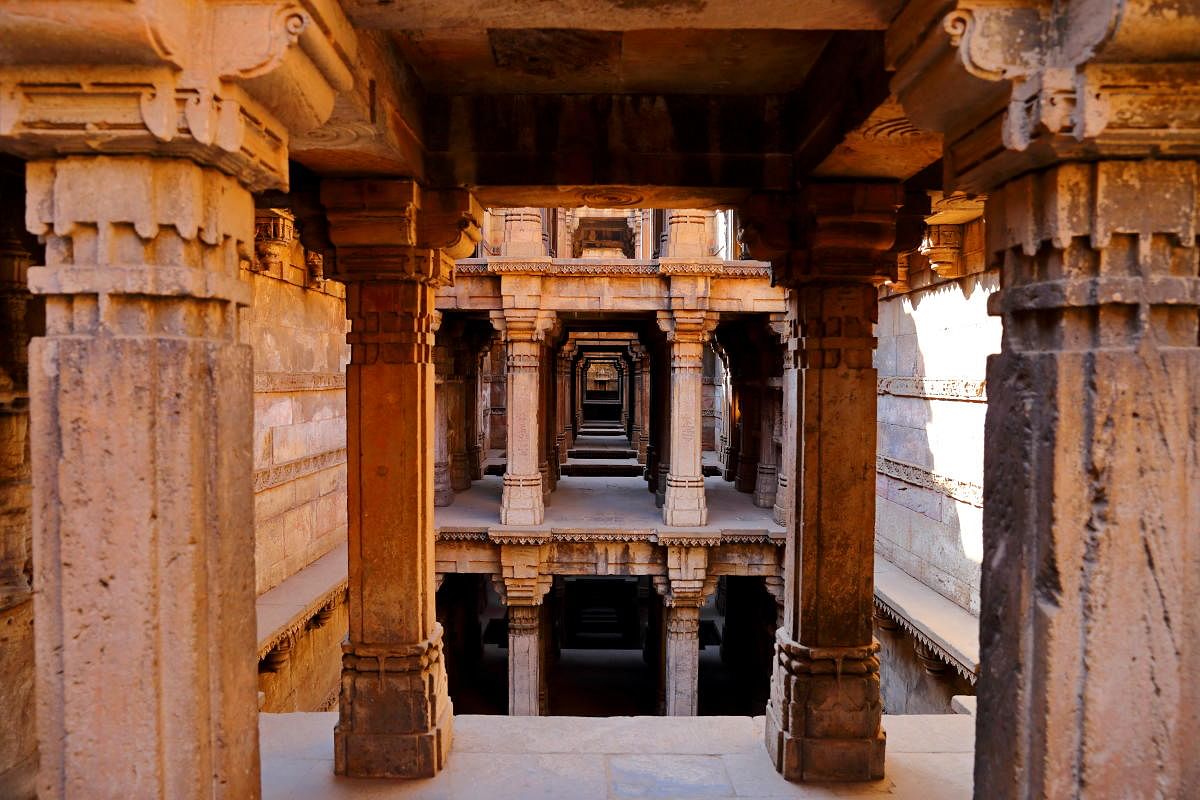
Benjamin Franklin, one of the Founding Fathers of the United States said, “When the well is dry, we know the worth of water.” But people in ancient Gujarat were wise enough to realise the worth of water — the driving force of all nature — much before the well would go dry. In fact, in Gujarat the wells would always be filled with water even during the long, dry and hot summer season. No wonder the westernmost state of India is aptly called ‘the land of stepwells’ — a stepwell (locally called ‘vav’) meaning a well in which the water is accessed by descending a flight of steps. A UNESCO heritage site, the Dada Harir Vav in Ahmedabad’s Asarwa area, is just a distance away from the main city. There are many reasons to see the ‘vav’ but at least five could be motivating enough to visit the impressive water monument.
Fascinating history
Even if you are not a history buff, you will find the history behind Dada Harir’s Vav quite fascinating. Very few historical monuments are built by women, this is one amongst them. According to the Arabic inscription in the stepwell, it was built by Bai Harir Sultani, (locally known as Dhai Harir, the name later corrupted into Dada Hari) who was a woman of influence in Sultan Mahmud Begada’s court in the late 15th century. Some say that she was the superintendent of the royal harem and had got a huge grant to build this impressive stepwell to provide not just water to weary travellers in an arid land but offer shelter from the hot and dry weather. 500 years ago, the approximate cost of building the stepwell turned out to be more than three lakh Mahmudis (equivalent to more than a lakh rupees.)
Distinct style of architecture
You get to see a distinct style of architecture known as Solanki architectural style in this stepwell. Solanki dynasty ushered the most glorious period in the history of Gujarat during which Gujarati culture flowered, particularly in art and architecture. Besides, five-stories and 70-metres deep, the stepwell’s octagonal shape makes it very different from other stepwells in Gujarat. As you take a descent of eight steps, you enter a covered gallery.
A nine-step descent leads to another gallery, and a third of eight steps to the lowest gallery which is three foot above the pool of water. At each landing, a corridor runs along the sides leading to other galleries that cross the well at intervals. The well is best visited in the morning when sunlight penetrates down and you don’t find it difficult to descend to the lowermost level.
Indo-Islamic design
A fine and exceptional example of Indo-Islamic design, the water reservoir is made of sandstone and is richly ornamented with motifs, inscriptions and patterns. As one descends its steps, one can see the latticework and carvings on walls, parapets and columns. Intricate sculptured arches with floral motifs and passageways connecting the shafts to the platforms are seen on each level. Some say that the rich sculptures that adorn the walls of the vav resemble those found in palaces which reflect a fine blend of traditional Muslim architecture and Hindu sculpture skills.
Environmental consciousness
Harmony between human being and ecology has always been the focal point of Indian ethos. You are bound to be surprised by the age-old wisdom and vision of its architects as far as environmental consciousness is concerned. Issues of sustainability, use and reuse, recycling, and conservation of water were definitely uppermost in their minds. Isn’t it interesting to notice that there’s no shortage of sunlight on all its floors yet the design was such that direct sunlight could not penetrate the well. Due to this, evaporation of water was reduced to a minimum. Moreover, the water was filtered through earth, thus it always remained pure and fresh. The temperature inside the well is said to be about 5 degrees less than the outside ambient temperature cooling down the intense scorching heat of summers at subterranean levels. Studies revealed that the stepwell was so solidly constructed that it could withstand massive earthquakes up to the scale of 7.6 on the Richter scale.